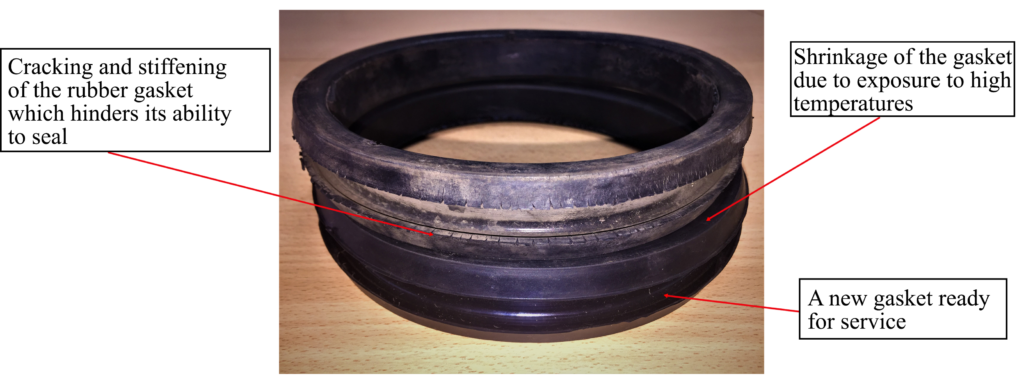High Temperature Drilling Concerns: Safety and CAPEX
Our previous news articles discussed the safety risks encountered by early geothermal drillers in California. They experienced burn hazards and jeopardized well control due to high temperature drilling fluid. These risks are still a problem today for both geothermal and HPHT drilling alike. By reducing the suction and flowline temperatures, these operations are made safer.
High temperature drilling is here to stay and will require new technology to make it economical. As operators feel the “squeeze” between low oil prices [1] and increased production cost in 2017 [2], they need a way to decrease their CAPEX and maintain a high standard of safety. By protecting equipment and consumables from high temperatures, operators could help augment their cost. For example, rubber elements on the rig, such as seals or the rotary hose, deteriorate at high temperatures. Thus, high service temperatures result in a faster consumption of rubber elements. The image shown below is a rubber seal exposed to high temperatures during an experiment.

Image 1 – EPDM rubber seal (top) exposed to high temperature causing rapid degradation and its replacement (bottom). Photo by DCS Team
It shows signs of thermal degradation and subsequently would require a replacement.
There are more items like the gasket above, where high temperatures cause rapid wear. These include the drilling fluid, BOP preventers, pump seals and downhole tooling. By reducing their service temperatures, operators could significantly reduce their CAPEX.
[su_expand more_text=”More Information” less_text=”Less ” height=”20″ more_icon=”icon: angle-double-down” less_icon=”icon: angle-double-up”]Drilling Fluids
D. Weintritt and R. Hughes, “Factors Involved in High-Temperature Drilling Fluids”, Journal of Petroleum Technology, vol. 17, no. 06, pp. 707-716, 1965. onepetro.org [/su_expand]
[su_expand more_text=”More Information” less_text=”Less ” height=”20″ more_icon=”icon: angle-double-down” less_icon=”icon: angle-double-up”]BOPs
B. Parker, “Development of Geothermal Capable Elastomers for Use in Ram Type Blowout Preventers Phase IV Testing at Geothermal Wellsite”, Geothermal Resources Council Transactions, vol. 19, pp. 117-122, 1995. geothermal-library [/su_expand]
[su_expand more_text=”More Information” less_text=”Less ” height=”20″ more_icon=”icon: angle-double-down” less_icon=”icon: angle-double-up”]Seals
Grundfos Management A/S, Mechanical shaft seals for pumps. Bjerringbro: GRUNDFOS, 2009, pp. 75-88. machining.grundfos.com [/su_expand]
References:
[1] “WTI Crude Oil Price Charts | Oilprice.com”, OilPrice.com, 2017. [Online]. Available: http://oilprice.com/oil-price-charts/45. [Accessed: 06- Oct- 2017].
[2] J. Kemp, “U.S. drilling costs start to rise as rig count climbs: Kemp”, Reuters, 2017. [Online]. Available: https://www.reuters.com/article/us-usa-oil-drilling-kemp/u-s-drilling-costs-start-to-rise-as-rig-count-climbs-kemp-idUSKBN19Z1E2. [Accessed: 06- Oct- 2017]